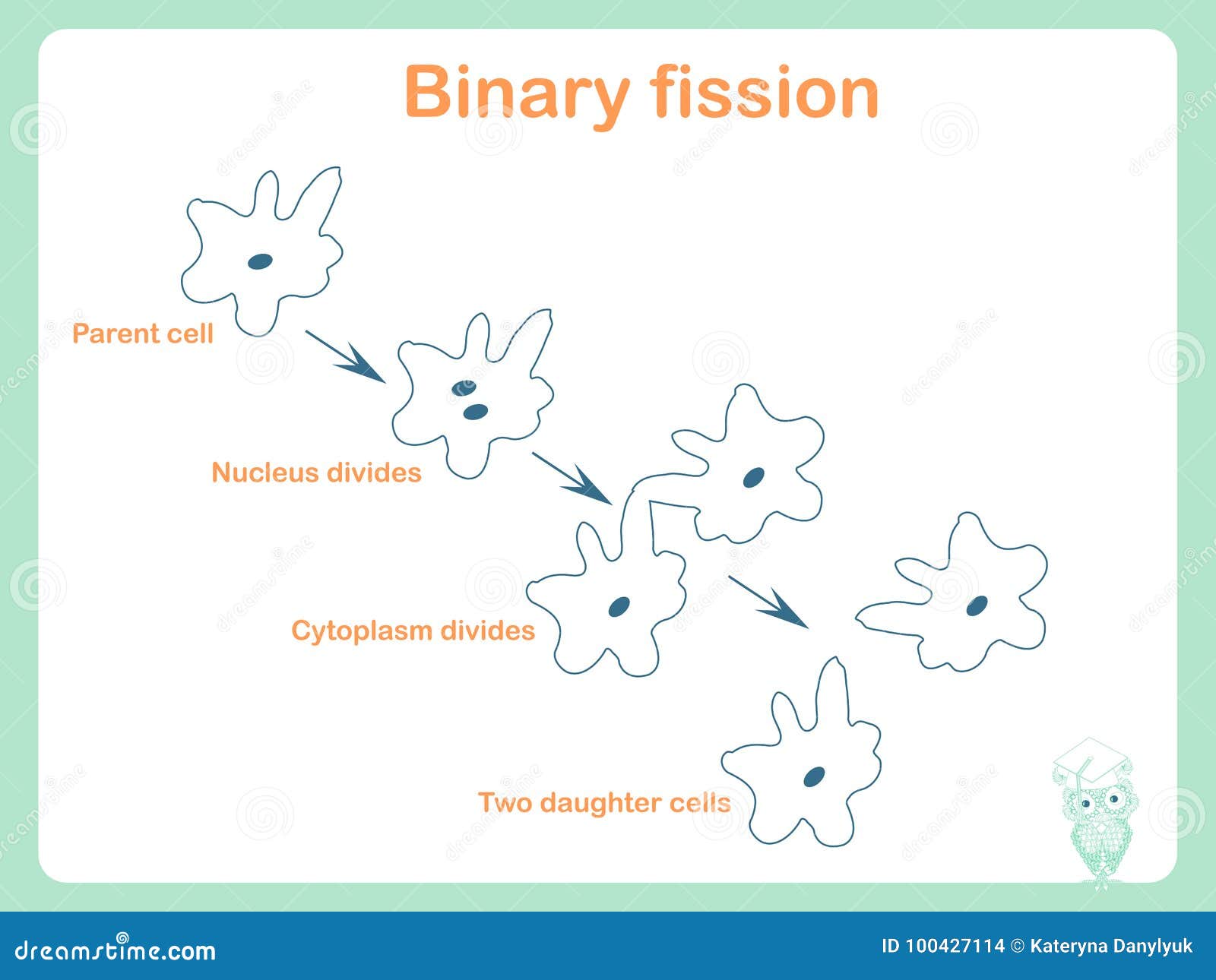

It reproduces through binary fission which is an asexual mode of reproduction. Read More: Nuclear Membrane Binary Fission in AmoebaĪmoeba is a shapeless, unicellular eukaryotic organism with a porous cell membrane that encloses the cytoplasm and all other cell organelles. Two daughter cells contain DNA and all the necessary cell organelles. Once the cross formation finishes, two daughter cells separate from each other completing the binary fission process.The cell elongates and cross wall or septum formation starts.The cytoplasmic content increases significantly and the DNA strands separate and segregate to opposite poles. After doubling the DNA, the cell starts growing in size.As a result, a copy of its own DNA is created. The cell initiates replication of its own DNA.The following steps are observed in the process of bacterial binary fission: The growth-specific factors include temperature, light, moisture, pH, oxygen level, etc. The Doubling time refers to the time a bacterium takes to double its number. On the other hand, the doubling time of Clostridium perfringens, one of the fastest-growing bacteria, is 10 minutes under normal growth conditions. For instance, If all growth-specific environmental factors are present, the doubling time can be as low as 20 minutes, observed in Escherichia Coli. However, the speed differs in different species. Binary fission in bacteria is an extremely rapid process. The process of binary fission in bacteria and amoeba takes place in the following ways: Binary Fission in Bacteriaīacteria are prokaryotic organisms with very simple cell organization. In the case of longitudinal binary fission, The cytoplasm splits lengthwise, from forward to backward, forming two similar daughter individuals.Ī few metazoan (multicellular) species regularly undergo a body division into several units simultaneously, this process is known as fragmentation. In oblique binary fission, the parent cell divides along an oblique plane creating two unequal daughter cells.Įxample: dinoflagellates such as Ceratium Regular transverse in some organisms such as scyphistoma polyps leads to a formation of a chain-like structure called a strobilus.

Here, in transverse binary fission, the cytoplasm divides transversely between two sets of nuclei forming two unequal daughter cells. In the case of irregular binary fission, the parent cell may divide in any plane but the place of division is always perpendicular to the spot where the nuclear division occurred.

Depending on the axis of the cell separation binary fission can be of the following types.


 0 kommentar(er)
0 kommentar(er)
